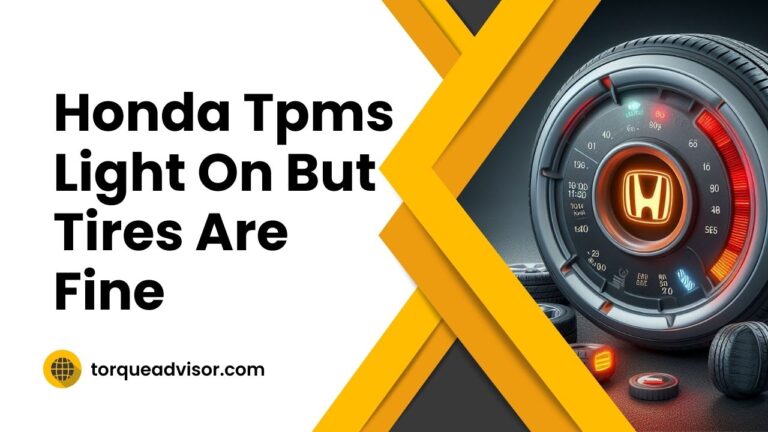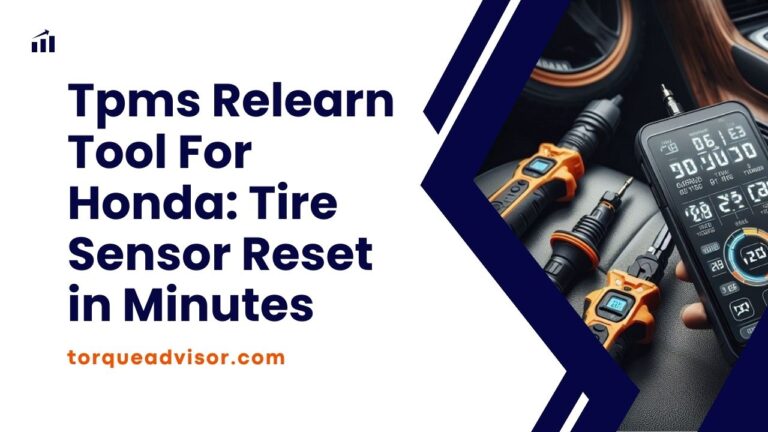Tire Pressure Monitoring System Fault: Common Reasons & Solutions
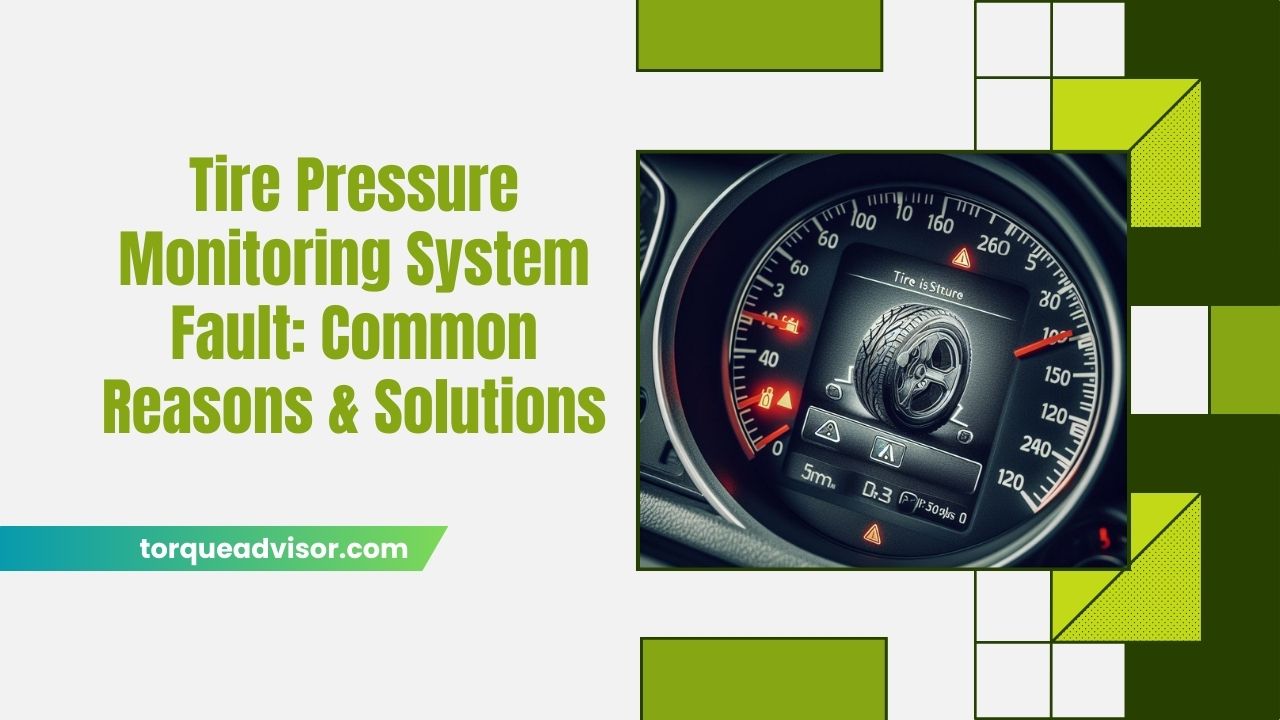
Experiencing a Tire Pressure Monitoring System fault can be both frustrating and potentially hazardous.
Low battery, sensor damage, faulty wiring, or sensor calibration issues are common reasons for Tire Pressure Monitoring System faults.
Understanding the common causes and addressing the issue promptly is essential for a smooth and secure driving experience.
Tire Pressure Sensor Fault Meaning
A Tire Pressure Sensor Fault indicates a malfunction in the tire pressure monitoring system (TPMS) of a vehicle.
This warning suggests that one or more tire pressure sensors may be damaged or experiencing issues. And its affecting the system’s ability to accurately monitor and report tire pressures.
Tire Pressure Monitoring System Fault Tesla
There are a few potential causes:
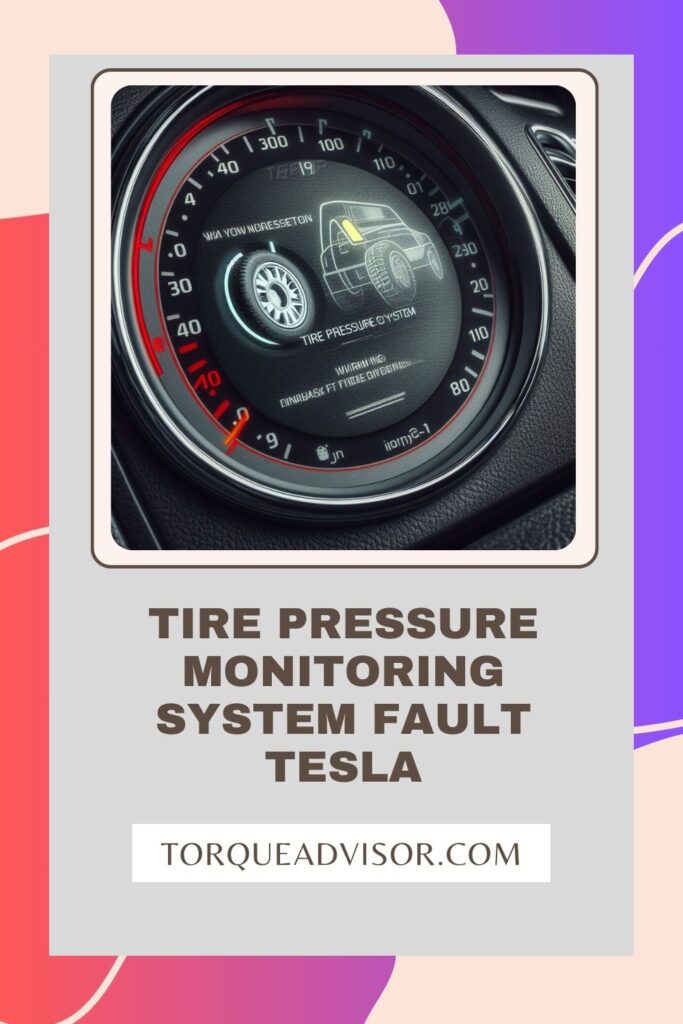
1. Incorrect tire pressure
This is the most common culprit. Check all tire pressures with a reliable gauge and adjust them to the recommended level specified in your Tesla owner’s manual.
2. Faulty sensor
One or more tire pressure sensors might be malfunctioning, failing to transmit pressure data to the car’s system. This could be due to a low battery in the sensor, a damaged valve stem, or a problem with the sensor itself.
3. Software glitch
In rare cases, a software glitch in the car’s system can trigger a false TPMS fault. You can try resetting the TPMS system (consult your owner’s manual for the specific procedure for your Tesla model).
4. External interference
Radio frequency interference from aftermarket electronics or even certain chargers can sometimes disrupt the TPMS signal. Try driving away from the suspected source of interference and see if the warning persists.
5. Tire change or repair
If you recently replaced tires or used a different tire sealant than Tesla recommends, it might affect the sensor or its communication with the system.
Read More About 6 Best Tpms Retrofit Kits To Upgrade Your Vehicle’s Tire System
Tire Pressure Monitoring System Reset
The exact procedure can vary depending on the make and model of your vehicle. However, we can provide you with a general idea of how the process might work:
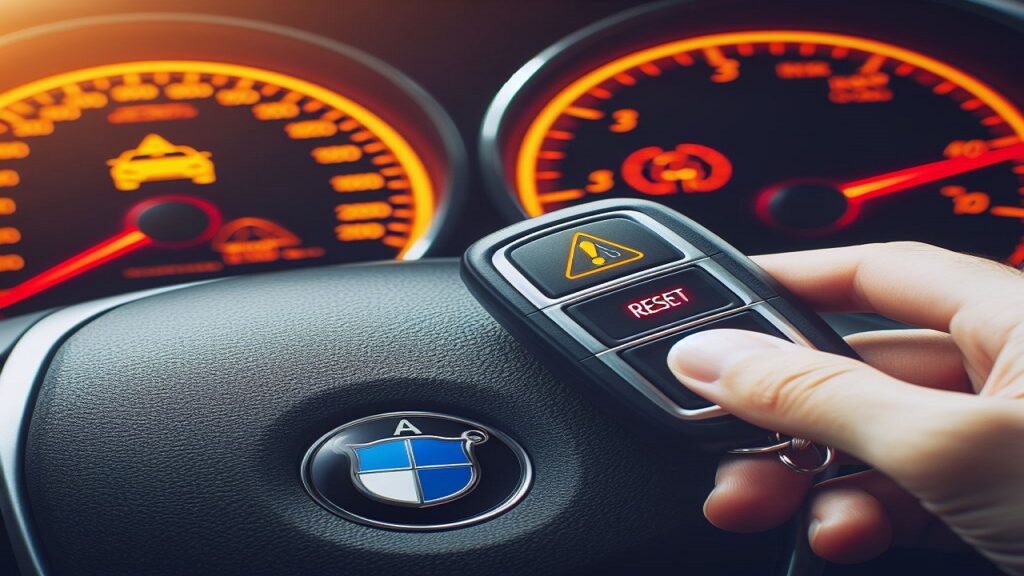
Step 1: Locate the TPMS Reset Button
Some vehicles have a reset button for the TPMS. This button is often located under the dashboard or in the glove compartment.
Step 2: Turn on the Ignition
Turn the ignition key to the “On” position without starting the engine. For vehicles with a push-button start, press the engine start button without depressing the brake pedal.
Step 3: Press and Hold the Reset Button
Press and hold the TPMS reset button until you see the TPMS indicator light on the dashboard blink or hear a beep.
Step 4: Drive the Vehicle:
After the reset, it’s common for the TPMS system to require some driving to relearn the tire pressure values.
Why Is My Tire Pressure Light Still On After Filling Tires?
Here are some possibilities:
- Sensor Calibration: After inflating the tires, the tire pressure monitoring system (TPMS) sensors may need to be recalibrated.
- Faulty Sensor: The TPMS sensors might be faulty or damaged. Sensors can wear out over time, leading to inaccurate readings or failure.
- Leak or Puncture: Even after filling the tires, there may be a slow leak or a puncture that is causing the tire pressure to drop.
- Incorrect Tire Pressure: Overinflated or underinflated tires can trigger the TPMS light.
- System Malfunction: There could be a malfunction in the vehicle’s TPMS system itself.
Tire Pressure Sensor Fault But Tires Are Fine
A tire pressure sensor fault may occur due to issues with the sensor itself, such as a malfunction or a dead battery. Even if the tires seem fine, it’s crucial to address the sensor problem to ensure accurate monitoring.
Tire Pressure Sensor Fault Ford
If your Ford vehicle is displaying a tire pressure sensor fault, it’s crucial to check each tire’s pressure manually using a gauge. If pressures are correct, the sensor may need recalibration or replacement.
Tire Pressure Sensor Fault Replacement
Here are the general steps you can follow to replace a faulty tire pressure sensor:
Step 1: Raise the car with the jack
Place the jack on the designated point as indicated in your owner’s manual. Raise the car until the faulty tire is off the ground.
Step 2: Deflate the tire
Use the valve stem remover to carefully remove the valve core and allow the air to escape.
Step 3: Remove the faulty sensor
Unscrew the sensor nut from the valve stem using the appropriate wrench.
Step 4: Install the new sensor
Screw the new sensor onto the valve stem and tighten the nut to the specified torque using the torque wrench.
Step 5: Reinflate the tire
Use a reliable gauge to inflate the tire to the recommended pressure listed in your car’s manual.
Step 6: Reset the TPMS system
Follow the instructions in your owner’s manual for your specific car model. Some models require a TPMS tool for reprogramming.
Tire Pressure Sensor Fault Flashing
A flashing tire pressure sensor fault light can be more concerning than a solid light because it often indicates a specific issue in the TPMS system.
Possible Causes of Flashing TPMS Fault
- Sensor communication issue: This is the most common reason for flashing. It could be due to a low battery in the sensor, a damaged valve stem, interference with the signal, or a problem with the sensor itself.
- System malfunction: In rare cases, a software glitch in the car’s system can trigger a false TPMS fault with flashing.
Troubleshooting Steps
- Check tire pressure: Ensure all tires are inflated to the recommended pressure listed in your owner’s manual. This might resolve the issue if a sensor was falsely triggered by low pressure.
- Reset the TPMS system: Follow the instructions in your owner’s manual. Resetting the system can sometimes clear temporary glitches.
- Identify specific tire (if possible): Some cars show which tire triggered the fault on the dashboard. This can help narrow down the problem.
- Move away from potential interference: Radio frequency interference from electronics or chargers can disrupt the TPMS signal. Try driving away from the potential source and see if the light stops flashing.
Read Also Honda Tpms Light On But Tires Are Fine
How To Check Tpms Sensor
Here are some options:
1. Drive and Monitor
Most modern cars automatically update TPMS readings after driving for a while. Drive for at least 15 minutes at highway speeds and see if the warning light disappears.
2. Manual Tire Pressure Check
This is the simplest, yet crucial step. Use a reliable gauge to check all tire pressures against the recommended level specified in your owner’s manual.
3. TPMS Tool Scan
You can purchase or borrow a TPMS tool that scans the sensors and displays information like battery life, pressure readings, and error codes. This can pinpoint problematic sensors.
4. Visual Inspection
Check the tire valve stems for any visible damage to the sensor housing or valve stem itself. Damage can disrupt communication or cause leaks.
Why Do Tpms Sensors Fail?
- Battery Failure: Limited sensor battery life.
- Sensor Damage: Physical damage or corrosion.
- Faulty Seals: Seal deterioration leads to air and moisture intrusion.
- Electronic Issues: Malfunctions in sensor circuitry.
- Tire Puncture: Damage during a puncture or repair.
- Improper Installation: Incorrectly installed sensors may fail.
- Age: Sensors degrade over time.
- Environmental Factors: Harsh weather or extreme temperatures impact sensor performance.
- Manufacturing Defects: Flaws in the sensor’s production process.
Problems With Tire Pressure Sensors
Here are some common issues associated with tire pressure sensors:
- Low Battery Life
- Faulty Sensors
- Incorrect Readings
- Interference and Signal Loss
- TPMS Warning Light Malfunction
- Sensor Initialization Issues
- Corrosion and Contamination
- System Malfunction
- Tire Replacement and Sensor Compatibility
Chevy Tire Pressure Sensor Problems
Common Chevy TPMS Problems:
- Low battery in sensor: Batteries typically last 5-7 years. A low battery can trigger false warnings or prevent pressure readings.
- Damaged sensor: Physical damage to the sensor housing or valve stem can disrupt communication, lead to leaks, or cause inaccurate readings.
- Internal sensor malfunction: Sensor components can fail over time, leading to inaccurate readings or complete failure.
- Radio frequency interference: Strong RF signals from electronics or chargers can disrupt communication between the sensor and the car’s system.
- Software glitches: Rare glitches in the car’s TPMS system can trigger false warnings or prevent proper communication with the sensors.
- Incorrect tire pressure: This is the most common culprit. Always check pressure before suspecting sensor issues.
- Tire change or repair: Incompatible sealants or improper installation can affect sensor functionality.
- Extreme temperatures: In rare cases, extreme hot or cold weather can temporarily impact sensor readings.
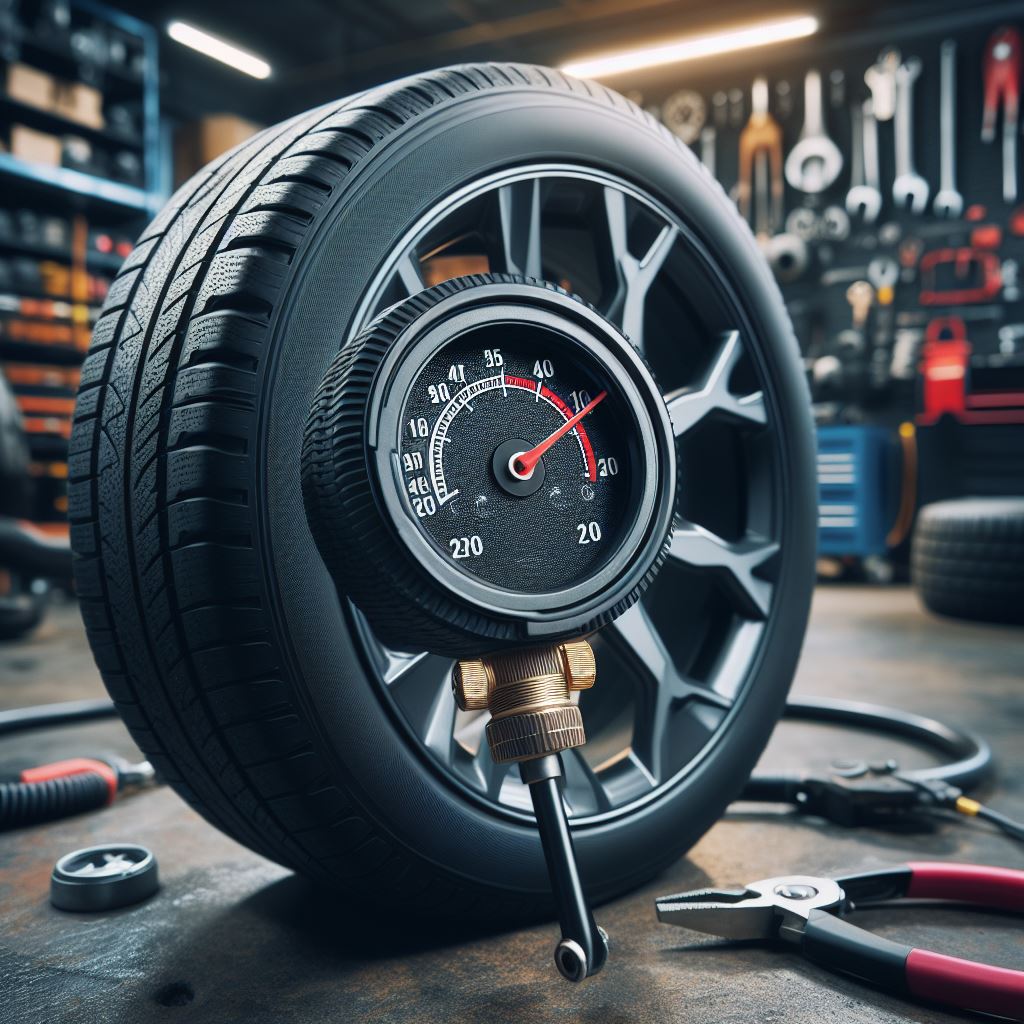
How Do You Fix A Tire Pressure Monitoring System Fault?
Here’s a breakdown of some common fixes and approaches:
Simple Fixes
- Check tire pressure: Use a reliable gauge and inflate all tires to the recommended pressure listed in your car’s manual.
- Reset the TPMS system: This can sometimes clear temporary glitches or reinitialize communication with the sensors.
Deeper Checks and Fixes
- Replace a faulty sensor: If a specific sensor is malfunctioning, you’ll need to replace it.
- Fix a damaged sensor: In some cases, minor damage to the sensor or valve stem might be repairable.
- Address interference: If strong RF signals are disrupting the TPMS signal, try moving away from potential sources like electronic devices or chargers.
- Update car software: In rare cases, a software glitch in the car’s system can trigger false TPMS warnings. Check for software updates from your car manufacturer and install them if available.
What Is The Difference Between Tire Pressure Light And Tpms?
Here’s a table outlining the differences between the Tire Pressure Light and TPMS:
| Feature | Tire Pressure Light | TPMS (Tire Pressure Monitoring System) |
| Purpose | Indicates low tire pressure | Constantly monitors tire pressure |
| Activation | Activates when tire pressure is low | Always active, continuously monitors |
| Indicator | Single warning light on dashboard | May have a dedicated display or individual tire pressure readings |
| Alert Level | Indicates low pressure only | Provides real-time pressure information |
| Sensor Location | Not applicable | Sensors installed in each tire |
| Warning Type | General low pressure warning | May provide specific tire pressure readings or warnings for each tire |
| Feedback to Driver | Limited information | Detailed information about each tire’s pressure |
| Action Required | Driver needs to check and inflate tires | Driver can monitor and address specific tire pressure issues |
| Typical Symbol | Exclamation mark inside a tire | Tire symbol with pressure readings |
How Do I Permanently Turn Off Tpms Light?
Here are some safe and responsible alternatives to consider if your TPMS light is on:
- Ensure all tires are properly inflated to manufacturer’s recommended pressure.
- Check for any damaged or malfunctioning TPMS sensors.
- Use a TPMS reset tool or follow the vehicle’s manual to reset the TPMS system.
How Much Should It Cost To Replace A Tire Pressure Sensor?
- Sensor cost: On average, tire pressure sensors range between $30 and $75 each.
- Labor cost: Expect to pay around $30 to $50 per tire for labor when getting the sensor replaced professionally.
In total, replacing a single tire pressure sensor can cost anywhere from $40 to $100, with the average landing around $60 to $80.
FAQs
Can I drive with tire pressure monitor fault?
It is not advisable to drive with a tire pressure monitor fault, as it compromises your ability to receive timely warnings about low tire pressure, increasing the risk of potential accidents.
What causes TPMS to fail?
TPMS failure can result from sensor issues, battery failure, or system malfunctions.
How do you reset a Tire Pressure Monitoring System?
Use the car’s reset button or follow the manufacturer’s instructions in the owner’s manual to reset TPMS.
Do I need to reset Tire Pressure Monitoring System?
Reset TPMS after tire rotation, replacement, or if the system alerts to ensure accurate readings.
Why is my tire pressure sensor fault but tires are fine?
Faulty sensors, low sensor battery, or system malfunctions may trigger sensor faults unrelated to tire condition.
Can a TPMS sensor be mounted within a tire?
No, TPMS sensors are typically mounted on the inner side of the tire valve stem, outside the tire for accurate readings.
Conclusion
The tire pressure monitoring system fault, though seemingly just a set of words, carries profound implications for our on-road experience. It’s a reminder that even the most sophisticated vehicles are not immune to occasional hiccups, and our commitment to safety should remain unwavering.
Regular check-ups, timely maintenance, and a keen awareness of the tire pressure monitoring system fault can go a long way in safeguarding our journeys.



